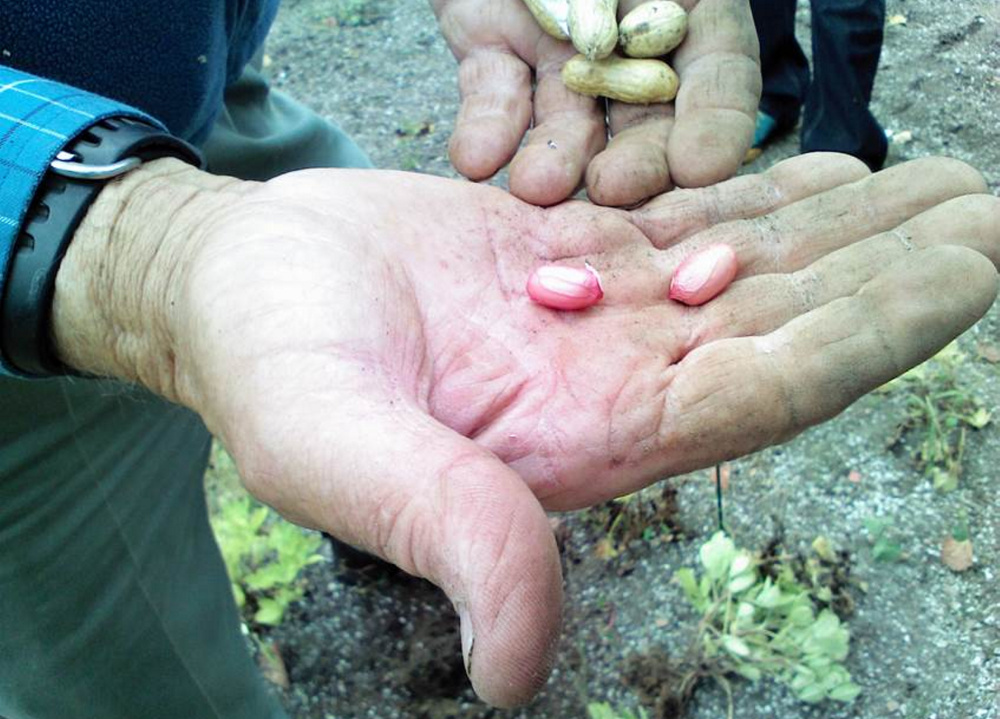Every seed tells a story, as does every tree. The history of the seeds and the stories behind them are as important as plants themselves in the Heirloom Seed Project at Medomak Valley High School in Waldoboro.
The project, begun in 1991 as an outgrowth of a horticulture class that began in 1972, includes a vegetable- and flower-seed-saving program, a living-history arboretum and a collection of 70 heirloom hostas.
Riley Arbour, a senior involved in the program, discovered more about her great-great-great-grandfather because of a honey locust tree in the arboretum. The locust was grown from seed dropped by a tree standing near Burnside Bridge in Antietam, Maryland. William Wheeler, her ancestor, fought in the battle as a first sergeant in the New York Infantry, and was shot in the leg.
“My great-great-great-grandfather would have walked right by that tree,” Arbour said, still amazed by her connection to a pivotal battle in the Civil War.
Other trees in the arboretum are connected to George Washington’s crossing of the Delaware, Mount Vernon, Monticello and the spot where President Lincoln gave the Gettysburg Address.
Neil Lash, who has taught in the program since it started, is most excited by a tree growing from one of the last scions taken from the last living tree in the last apple orchard that Johnny Appleseed ever planted.
The Heirloom Seed Project has 15 students this year, and each student is required to contact other seed savers around the world, requesting seeds of significance that they will then grow as part of the program. They also send Medomak Valley seeds to programs around the country.
The students have found that seed savers in those distant programs are pleased to assist them.
When student Jonathan Allard contacted a Minneapolis seed saver for Guinea green pepper seeds, he got not only the seeds he asked for but also two others, as well as a short history about the use and importance of each in maintaining a biodiversity of plants.
This fall’s biggest heirloom seed project is growing out some 1,500-year-old bean seeds found in a pottery jar deep inside a cave in New Mexico.
Lash said that scientists from the University of California, Los Angeles found the beans and determined their age through carbon dating. Some of the seeds were still viable and were planted to produce seed.
Baker Creek Heirloom Seed Co. in Missouri asked Medomak High School to grow out enough of the bean seeds so the company can sell them in their catalog – helping to save them from extinction and letting gardeners all across the country grow a piece of history.
The beans, which are believed to have been grown by ancient Pueblo cultures in New Mexico, are being grown in three large patches, each about 15 feet wide and 80 feet long. They are pole beans, growing about 8 feet tall.
Lash said the beans, which are used as dried beans rather than green beans, are tricky to grow because they have to be picked when the beans are yellow, signifying the bean seeds are fully developed. But if you don’t pick them within a day of their turning yellow, the pods split and the beans fall to the ground.
Baker Creek will pay the school up to 80 cents a pound – depending on quality – for the seeds the students produce, Lash said.
The four Heirloom Seed Project students I spoke with – Arbour, Allard, Cassidy Devers and Nicholas DePatsy – all said they did some gardening at home. They like participating in the Heirloom Seed Project because it gets them outside the classroom and gives them a chance to do something with their hands.
Devers, however, is the only one so far who plans on a career in farming. Her family is from Aroostook County, where they own a potato farm; she’d like to work there one day.
While the students grow and preserve historic seeds that are threatened by extinction, the program looks to the future as well as the past.
They are growing the Inca plant yacon, for instance, which is related to the Jerusalem artichoke. It’s in the daisy family and grows thick tubers underground. Many people are excited about it because although it has a sweet taste, it can be eaten by diabetics. The students are also working with the University of Maine on a type of rye that has wide hollow stems and long nodes, which could be used as a compostable substitute for plastic straws. And the Einkorn wheat they are growing can be eaten by people with celiac disease, who normally cannot eat any wheat.
Arla Casselman, who, like Nash, teaches in the seed-saving program, was excited about a $20,000 grant the school won last May from an essay contest sponsored by the Seed Savers Exchange. She is shopping Craig’s List for a walk-in freezer, which could preserve the seeds better than the walk-in refrigerator they now use.
You might wonder how the students – who have summers off – manage to grow all of these crops. Casselman, who is in her first year as a full-time life science teacher at Medomak Valley, has for several years run a program in which students work at the 2-acre gardens during the summer break.
While the grant from Seed Savers was great and any money the Heirloom Seed Project gets from Baker Creek will help, a prime money maker is the sale of seeds to the general public. The Heirloom Seed Project sells many of its rare and heirloom seeds, and its catalog has many rare and exciting vegetables and flowers that you could grow in your very own garden next year.
Tom Atwell has been writing the Maine Gardener column since 2004. He is a freelance writer gardening in Cape Elizabeth and can be contacted at 767-2297 or at tomatwell@me.com.
Send questions/comments to the editors.


